Electronic, physical and theoretical review of a pn junction field effect transistor
DOI:
https://doi.org/10.38017/2390058X.110Keywords:
Pn union, desertion region, saturation current, saturation voltage, junction field effect transistor.Abstract
This revision of the Electronics and Physics field effect transistor pn junction aims to explain and understand the mechanics of its operation. This type of transistor uses the following mechanism varying the width of the depletion layer in a pn junction modulates a bias voltage applied to the junction, the device uses this mechanism, to control the current passing through a region bounded by one or more pn junctions. As low stream flows to the pn junction reverse biased, then it consumes a small amount of power to the control electrode, therefore the controlled current delivers more power. This is the explanation synthesized of the device called field effect transistor, pn junction (JFET junction field effect transistor) and is used as a power amplifier.Author Biographies
Edwin Javier Sánchez Uriza, Fundación Universitaria Juan de Castellanos
Daniel Augusto Castellanos Coronado, Fundación Universitaria Juan de Castellanos
References
[1] J. P. Mckelvey, Solid State and Semiconductors Phisics, Harpers & Row Publishers Inc. , 2006, pp. 421-439.
[2] R. S. Muller, Device Electronics for Integrated Circuits, Jhon Wiley & Sons Inc., 2003, pp. 259-289.
[3] A. S. Sedra, andC. K. Smith, Microelectronics Circuits, Oxford Press, 2002, pp-295-303.
[4] R. L. Boylestad, Electronic Devices and Circuits Electronics, Third Edition, Pearson Prentice Hall, 2009, pp. 480-500.
[5] E. Boysen, and H. Kivett, Complet Electronics Self Teaching Guide, Jhon Wiley & Sons Inc, 2012 pp. 361-360. [On line]. Disponible en https://gurusaiprasanth.files.wordpress.com/2015/10/complete-electronics-self-teaching-guide-with-projects-honest.pdf
[6] S. G. Burns, andP. R. Bond, Principles of Electronic Circuits, St Paul, MN: West Publishing Co., 2007.
[7] R. A. Colclaser, D. A. Reamen, andC. F. Hawkins, Electronic Circuit Analysis: Basic Principles, New York: John Whiley and Sons, Inc., 2004.
[8] M. S. Gaussi, Electronic Devices and Circuits: Discrete and Integrated, New York: Holt, Rinehart, and Winston, 2008
[9] A. R. Hambley, Electronics, New York: Macmillian Publishig Co., 2004
[10] W. H. Hayt, andJr. Y G. W. Neudeck, Electronic Circuit Analysis and Design, 2nded. Boston: Houghton Mifflin Co., 2004.
[11] M. N. Horenstein, Microelectronics Circuit and Device, 6th. ed., GlewoodCliffs, N. J: Prentice Hall Inc., 2005.
P. Horowitz, and W. Hill, The Artof Electronics, 2nd. ed. New York: Cambridge University Press, 1999. [On line]. Disponible en https://www.uvm.edu/~gpetrucc/courses/Chem219/Lectures/Paul%20Horowitz,%20Winfield%20Hill%20-%20The%20Art%20of%20Electronics-Cambridge%20University%20Press%20(2015).pdf
[13] J. Millman, and A. Graybel, Microelectronics, 2nd. ed. New York: McGraw-Hill Book Co., 2007.
[14] C. J. Savant, M. S. Roden, andG. L. Carperter, Electronic Circuit Design: An Engineering Aproach, 2nd. ed. Redwood, CA. : The Benjamín-Cummings Publishing Co. , 2001.
[15] W. Banzhap, Computer-Aided Circuit Analysis Using PSpice, 2nd. ed. Englewood Cliffs, N. J: Prentice Hall Inc. , 2010.
[16] W. L. Brown, andA. Y. J . Szeto, “Verifying Spice Results with Hand Calculations: Handdling Common Discrepancies”, in IEEE Transaction on Education, vol. 37, no. 4, pp. 358-368, 2004. doi: https://doi.org/10.1109/13.330103
[17] M. H. Rashid, “SPICE for Circuit and Electronics Using Pspice”, in Englewood Cliffs, N. J: Prentice Inc., 2011.
[18] S. Naranjan, “An Effective Approach to Obtain Model Parameters for BJTs and FETs from Data books”, in IEEE Transactions of Education, vol. 35, no. 2, pp. 164-169, 2002. doi: https://doi.org/10.1109/13.135583
[19] C. Searle, A. Boothroyd, A. E. (Jr) Gray, and P. Pederson, Propiedades de Circuito Elementales de los Transistores, Tomo 3 de la serie SEEC, Barcelona, España: Ed. Reverté S. A., 2001.
[20] R. Thornton, C. Searle, D. Pederson, R. Adler, and E. (Jr) Angelo, Circuitos Multietapa de Transistores, Tomo 5 de la serie SEEC, Barcelona, España: Ed. Reverté S. A., 2005.
[21] P. Gray, and R. Meyer, Analysis and Design of Analog Integrated Circuits, NY, USA: Ed. John Wiley & Sons Inc., 2007. [On line]. Disponible en http://cds.cern.ch/record/570193/files/0471321680_TOC.pdf
[22] J. Millman, and C. Halkias, Integrated Electronics, Tokyo, Japan: Ed. Mc Graw Hill Kogakusha, 2002.
[23] Texas Instruments, Preferred Semiconductors and Components from Texas instruments, Dallas, 2008.
How to Cite
Downloads
Downloads
Published
Issue
Section
License
Copyright (c) 2015 Ciencia, Innovación y Tecnología

This work is licensed under a Creative Commons Attribution-NonCommercial-ShareAlike 4.0 International License.




